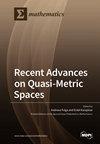Dynamics of a Dengue Transmission Model with Multiple Stages and Fluctuations
IF 2.2
3区 数学
Q1 MATHEMATICS
引用次数: 0
Abstract
A vector–host model of dengue with multiple stages and independent fluctuations is investigated in this paper. Firstly, the existence and uniqueness of the positive solution are shown by contradiction. When the death rates of aquatic mosquitoes, adult mosquitoes, and human beings respectively control the intensities of white noises, and if R0s>1, then the persistence in the mean for both infective mosquitoes and infective human beings is derived. When R0s>1 is valid, the existence of stationary distribution is derived through constructing several appropriate Lyapunov functions. If the intensities of white noises are controlled and φ<0 is valid, then the extinction for both infective mosquitoes and infective human beings is obtained by applying the comparison theorem and ergodic theorem. Further, the main findings are verified through numerical simulations by using the positive preserving truncated Euler–Maruyama method (PPTEM). Moreover, several numerical simulations on the infection scale of dengue in Fuzhou City were conducted using surveillance data. The main results indicate that the decrease in the transfer proportion from aquatic mosquitoes to adult mosquitoes reduces the infection scale of infective human beings with dengue virus, and the death rates of aquatic mosquitoes and adult mosquitoes affect the value of the critical threshold R0s. Further, the controls of the death rates of mosquitoes are the effective routes by the decision-makers of the Chinese mainland against the spread of dengue.具有多阶段和多波动的登革热传播模型的动态变化
本文研究了具有多阶段和独立波动的登革热病媒-宿主模型。首先,通过矛盾证明了正解的存在性和唯一性。当水蚊、成蚊和人类的死亡率分别控制白噪声的强度时,如果 R0s>1 ,则得出感染蚊子和感染人类的平均值的持续性。当 R0s>1 有效时,通过构建几个适当的 Lyapunov 函数,可以推导出静态分布的存在。如果白噪声的强度得到控制,且 φ<0 有效,则可通过应用比较定理和遍历定理得到感染性蚊子和感染性人类的消亡。此外,还利用正保留截断欧拉-马鲁山方法(PPTEM)通过数值模拟验证了主要结论。此外,还利用监测数据对福州市的登革热感染规模进行了多次数值模拟。主要结果表明,水生蚊子向成蚊转移比例的减少降低了登革热病毒感染人类的感染规模,而水生蚊子和成蚊的死亡率会影响临界阈值 R0s 的值。此外,控制蚊子死亡率是中国大陆决策者防止登革热传播的有效途径。
本文章由计算机程序翻译,如有差异,请以英文原文为准。
求助全文
约1分钟内获得全文
求助全文
来源期刊

Mathematics
Mathematics-General Mathematics
CiteScore
4.00
自引率
16.70%
发文量
4032
审稿时长
21.9 days
期刊介绍:
Mathematics (ISSN 2227-7390) is an international, open access journal which provides an advanced forum for studies related to mathematical sciences. It devotes exclusively to the publication of high-quality reviews, regular research papers and short communications in all areas of pure and applied mathematics. Mathematics also publishes timely and thorough survey articles on current trends, new theoretical techniques, novel ideas and new mathematical tools in different branches of mathematics.
 求助内容:
求助内容: 应助结果提醒方式:
应助结果提醒方式:


